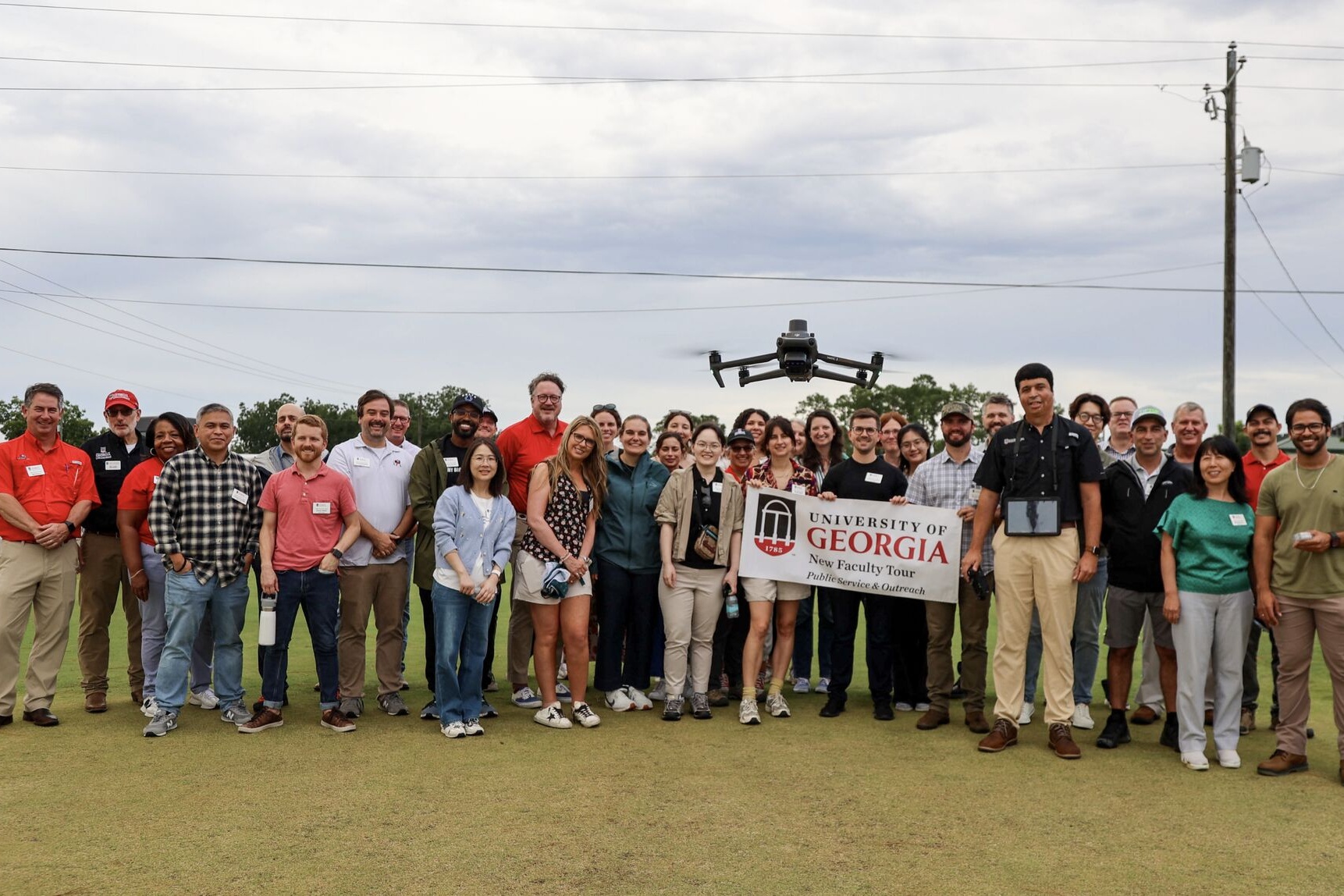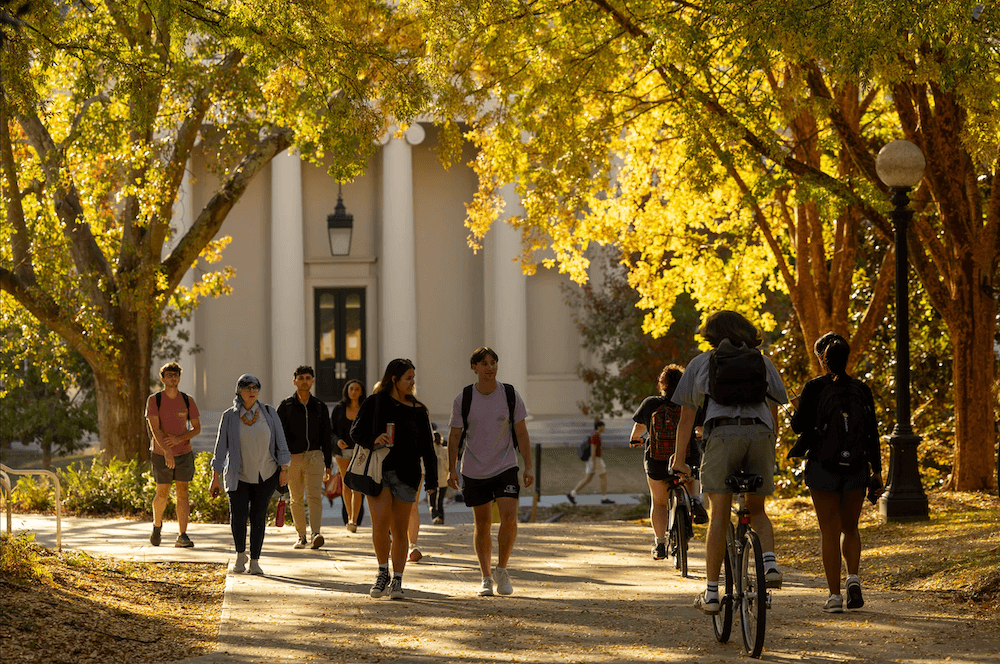One of the surest signs that fall is upon us is the appearance of pumpkins for sale
along the roadside. If the pumpkins are ready for harvest, the frost upon them can’t be
far behind.
The search for the perfect pumpkin has become almost as important as scouring the woods
for the perfect Christmas tree. Pumpkins come in many shapes and sizes, and people’s
preferences vary.
The miniature has become popular among those who dabble in decorative design. The giant
is a challenge for the competitive at heart. The pie pumpkin, usually 3 to 6 pounds, is
the culinary choice. And the jack-o’-lantern types are a cut above for those who like to
carve.
So where do we find the one that will satisfy our own holiday desires?
Linus waited in the pumpkin patch each year for the great pumpkin. This course of
action may only lead, however, to frustration and frostbite.
| Send e-mail for the 200 dpi image.  J. Cannon UGA CAES |
| BIG ORANGE ORBS just wait to be picked out and carved for Halloween. These pumpkins are grown for jack-o’-lanterns, but pie and ornamental varieties are also widely available. Most pumpkins you’ll find in Georgia weren’t grown here, though, said a University of Georgia horticulturist. Some produce markets or specialty farms may allow you to pick your own from the field. Those, you’ll know, are Georgia-grown treats. |
The best pumpkin may only be an afternoon’s drive away. Or it could be waiting at the
local supermarket.
Many roadside markets, produce stands and local grocers offer pumpkins. A growing
number of farms, too, offer hayrides to the field and let customers select their own
pumpkins. This is akin to the stroll in the forest looking for the right Christmas tree or
the Thanksgiving morning turkey hunt for the day’s main course.
Just don’t expect to always find a locally grown pumpkin. Georgia farmers grow only
about 600 acres of them each year, although that figure has been rising slightly.
Most of the pumpkins grown in Georgia are in the northern third of the state, although
there are a few south Georgia growers. Plant viruses and insect pressure make growing
pumpkins in south Georgia hard to do.
Many of the pumpkins sold in Georgia were grown up north and in the Midwest. Some come
from states such as Indiana, Ohio, Tennessee, Michigan and North Carolina.
Don’t give up hope, though, for just the right local pumpkin. Your chances of finding
it are better if you search local markets and on-farm sales outlets.
Then, of course, there’s always the challenge of growing your own. This is often not
possible. But if you have a big yard and don’t mind filling some of it with vines, give it
a whirl.
For harvest near Halloween or Thanksgiving, don’t plant pumpkins until early to late
June, depending on the variety. Never plant until danger of frost has passed.
Pumpkin varieties vary in size and color. To grow your own, start by selecting the
right variety for your use.
It takes proper care throughout the season to grow the long-awaited Big Orange Orb you
will cherish until it’s ladled into the pie crust or melts into the compost pile.
If you decide to grow your own, consult the county Extension Service office for
details.
Don’t expect to break the world record (more than 1,000 pounds). It’s virtually
impossible to grow competitively large pumpkins in the Georgia climate. Limit your
competition to local and state fairs.
How do you pick the proper pumpkin? Choose one with a hard rind and a dull color.
Declining vines indicate a ripe pumpkin, too. Pick pumpkins before frost and leave at
least 3 to 4 inches of stem on the fruit.
One caution: Southern-grown pumpkins usually can’t be stored as long as those grown in
other areas.
The pumpkin is a true American vegetable. It originated in the Americas and still holds
a fond place in our hearts. Whether in the backyard or in uncharted fields, our search for
the perfect pumpkin will always be a yearly delight.



